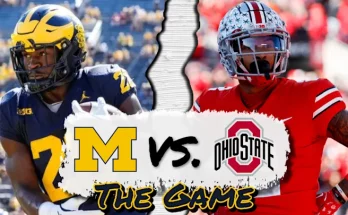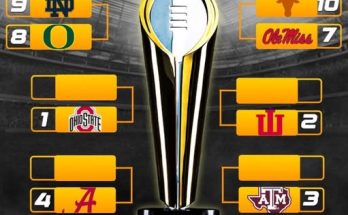In a move that has sent shockwaves throughout the National Hockey League and beyond, New York Rangers star Alexis Lafrenière has made headlines not just for his exceptional talent on the ice but for an extraordinary act of generosity off it. The highly touted forward, who recently signed a blockbuster contract extension reportedly worth $75 million, has stunned fans, teammates, and the entire hockey community by announcing that he is donating his entire signing bonus to charitable causes. This unprecedented decision has ignited conversations about athlete philanthropy, the role of professional sports stars in society, and the potential ripple effects this could have throughout the sporting world.
Alexis Lafrenière, the first overall pick in the 2020 NHL Entry Draft, quickly established himself as a rising star in the Rangers organization. His electrifying speed, skillful puck handling, and clutch performances have made him a cornerstone of the franchise’s future. As he approached the end of his entry-level contract, expectations were high that Lafrenière would secure a lucrative long-term deal. When the news broke that he had signed a multi-year extension with a staggering $75 million signing bonus, the focus initially was on his value as a player and the financial impact on the Rangers’ salary cap.
However, what turned this story into a global headline was Lafrenière’s revelation that he would not be pocketing the entire signing bonus for himself. In a heartfelt press conference held at Madison Square Garden, Lafrenière explained his decision, emphasizing his deep commitment to giving back to the community and making a positive difference beyond the rink. “Hockey has given me so much — opportunities, experiences, and support,” Lafrenière said. “This is my way of paying it forward, of using what I’ve been blessed with to help those in need and inspire others to do the same.”
The $75 million donation is being distributed across multiple initiatives, carefully selected by Lafrenière and his team. Significant portions are earmarked for youth sports programs in underserved communities, aiming to provide access to hockey and other athletic opportunities for children who otherwise might never experience the joy of organized sports. This aspect of the donation highlights Lafrenière’s understanding of how sports can transform lives, instilling discipline, teamwork, and confidence.
Another considerable share of the donation is dedicated to organizations focused on mental health awareness and support. Recognizing the growing importance of mental well-being in sports and society, Lafrenière is partnering with national mental health nonprofits to expand outreach and services, particularly for young athletes facing the pressures of competition and life’s challenges. His decision shines a light on an often overlooked but critical issue, demonstrating a maturity and social awareness beyond his years.
In addition, Lafrenière has pledged funding toward environmental causes, a reflection of his personal passion for sustainability and conservation. By supporting projects aimed at protecting natural habitats, reducing pollution, and promoting renewable energy, he hopes to inspire fellow athletes and fans to consider the environmental impact of their actions.
The hockey community’s reaction has been overwhelmingly positive. Rangers management praised Lafrenière’s selflessness, noting that his actions exemplify the character and leadership qualities the team values. Teammates expressed admiration and pride in having a player who not only excels on the ice but also embodies the spirit of giving off it. Across the NHL, players and executives have publicly lauded Lafrenière’s unprecedented gesture, with some suggesting that this could mark a turning point in how athletes approach their earnings and social responsibilities.
Media outlets around the world have picked up the story, framing Lafrenière as a role model for young athletes and a beacon of hope in an era often criticized for celebrity excess. Sports analysts have debated the implications of this act, discussing how it challenges traditional notions of wealth accumulation in professional sports and raises questions about the influence athletes can wield as philanthropists.
From a financial standpoint, the donation has also sparked interest and curiosity. Legal experts point out that donating a signing bonus of this magnitude involves intricate tax considerations and contractual stipulations. Lafrenière’s management team reportedly worked closely with tax advisors and league officials to ensure the donation complies with NHL regulations and maximizes its impact for the chosen causes. This careful planning underscores the seriousness and intentionality behind the act.
Fans have taken to social media to express their support, with many using hashtags celebrating Lafrenière’s generosity and encouraging other players to follow suit. Merchandise sales for the Rangers have surged, partially driven by the goodwill and renewed excitement surrounding the team’s philanthropic star. Community organizations benefiting from the donation have issued statements expressing profound gratitude, emphasizing how the funds will help expand programs, improve facilities, and touch countless lives.
The broader impact of Lafrenière’s donation is likely to be felt far beyond the initial media coverage. In an era when professional athletes are increasingly scrutinized for their off-field behavior and social engagement, such a high-profile charitable act could inspire a new wave of athlete-driven philanthropy. The pressure on other NHL stars and athletes in different sports to step up their charitable efforts may intensify, potentially reshaping the relationship between professional sports and community development.
Moreover, this act prompts a re-examination of how athletes perceive their role in society. Lafrenière’s gesture challenges the stereotype of athletes as solely focused on personal gain and fame, instead presenting a narrative of social responsibility, humility, and gratitude. For young fans who idolize hockey stars, this serves as a powerful lesson in using one’s platform for good.
While some skeptics might question the motivations behind the donation or suggest it is a publicity stunt, the sincerity of Lafrenière’s message and the transparency of his charitable plans have largely quelled such doubts. His track record of community involvement, coupled with the scale and scope of the donation, point to a genuine commitment rather than a one-time gesture.
The New York Rangers organization is also planning to collaborate with Lafrenière on community outreach programs, leveraging his influence to build sustainable initiatives that will continue to grow over time. This partnership could set a blueprint for other teams seeking to integrate player philanthropy into their broader social responsibility strategies.
Financial experts and sports economists are already speculating about the ripple effects this could have on contract negotiations across the league. If Lafrenière’s act encourages other players to allocate portions of their signing bonuses or salaries toward charitable causes, teams might need to consider this factor when structuring deals. Additionally, sponsorship and endorsement deals could increasingly tie into players’ philanthropic efforts, adding another dimension to athlete branding.



